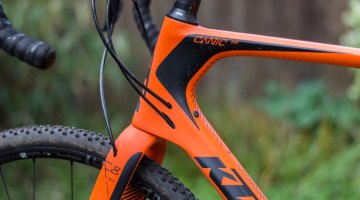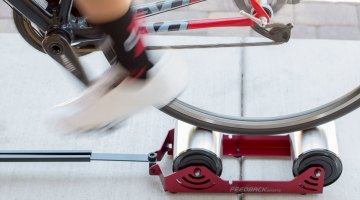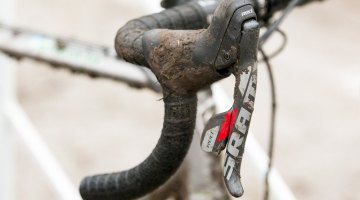Small Changes, Big Performance Gains
Remember that new bike feel? The shifting was butter smooth, brakes stopped on a dime, and pedaling felt like…there was no chain. All it takes is one cyclocross season, or even one sloppy race, to make that smooth operating bike a distant memory.
Brake pads, cables and housing and chains are small, affordable upgrades that can make huge, noticeable improvements in your ride. How many times do you brake or shift during a lap or ride? Each time you’ll appreciate the better braking or lighter, more accurate shifts, with simple upgrades available at any good local bike shop.
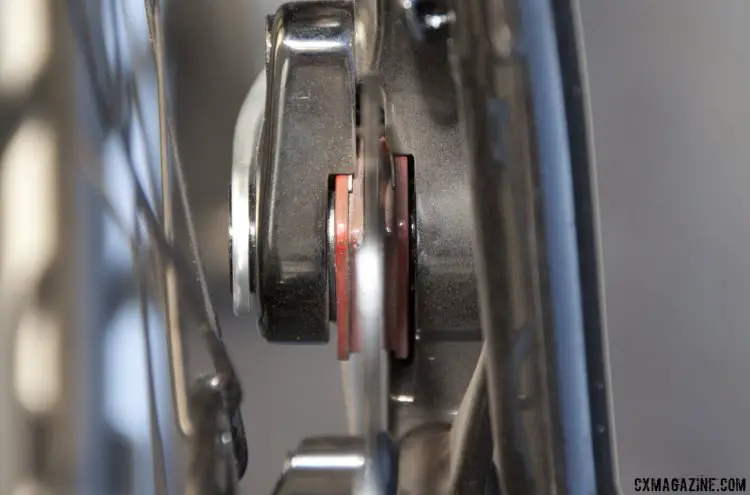
Replacing disc or canti pads regularly is a quick upgrade. © Cyclocross Magazine
Better Brake Pads = Free Speed
We’ve said for years that brake pads, even before disc brakes became the dominant format, are a worthwhile, noticeable upgrade, and disc brakes don’t change this fact. A new pad, a new pad material or an aftermarket pad can all make your bike stop like new, and perhaps keep you braking during a wet, sandy race when other pads would have been worn down to the metal. If you’ve got better braking power, you’ll be more confident and can brake later, and that’s free speed.
We’ve awarded Kool Stop’s salmon pads with praise and Editors’ Choice distinctions, and if you’re running rim brakes, they’re hard to beat. Mayhew agrees:
“For cantilever brakes, it is almost impossible to beat Kool Stop Salmon pads. They last forever, stop very well and don’t retain grit like most other pads. That’s a $10 upgrade that’s almost a game changer”
Running long cable housing on your canti or mechanical disc brakes? We like to swap out standard brake cable housing for compressionless housing for a more responsive feel and less hand effort.
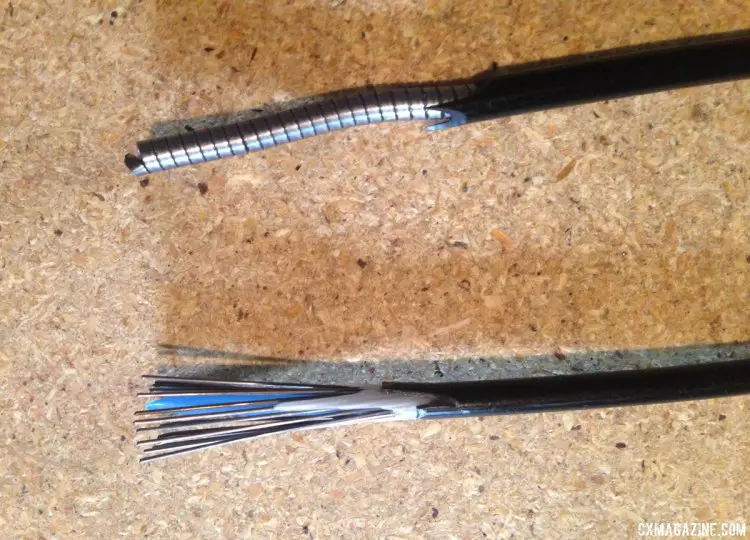
The traditional compression brake housing is on top, with a spiral cord. On the bottom is an example of compressionless housing you can find in most derailleur cable housing, but there’s compressionless brake housing as well.
Yokozuna’s Reaction housing (about $35), Jagwire’s Kevlar-reinforced housing (around $43) and Odyssey’s SLS Slic Cable housing (about $14 per wheel) all improve braking feel.
Shift Like New Again
Sure, you might lust after a brand new drivetrain, but shift your perspective to your cables and your chain to get your shifting and drivetrain friction back to new on a limited budget.
Simply replacing your housing and cables can give you like-new shifting, while sealed cable systems can reduce your maintenance effort and extend your shifting performance longer in nasty conditions. Jagwire’s Elite Road shift cable system (around $43) is a fine choice now that Gore’s Ride-On system has been discontinued.
Mechanic Jason Gardner agrees with cables and housing approach:
“$100 can go a long way to upgrading your shifting with a new cable system. You can move up to semi-sealed and fully sealed systems that shift more smoothly for a longer period of time and are less affected by the elements.”
While you’re swapping out housing and cables, consider making shifting adjustments easier for yourself in the future. Chinn details how (for about $14):
Adjustability is a wonderful thing for any bike. That’s why I like Jagwire Inline Cable Adjusters — they are inexpensive components, but can be a great help on cyclocross bikes, especially for front derailleur cables where many bikes don’t have any facility for adjustment. They can also be great additions to brake cables to fine-tune the pull. [They] make race day adjustments easier and quicker, and ensure that everything is fine-tuned as good as can be.
If you’ve tried cleaning your chain to no avail, or have already stretched it past recommended limits, consider replacing your chain. KMC offers rust-proof and Diamond-Like Coated chains for durable replacements, but even a new version of your OEM chain can do wonders for your shifting performance and pedaling friction (provided you haven’t worn out your chainrings or cassette).
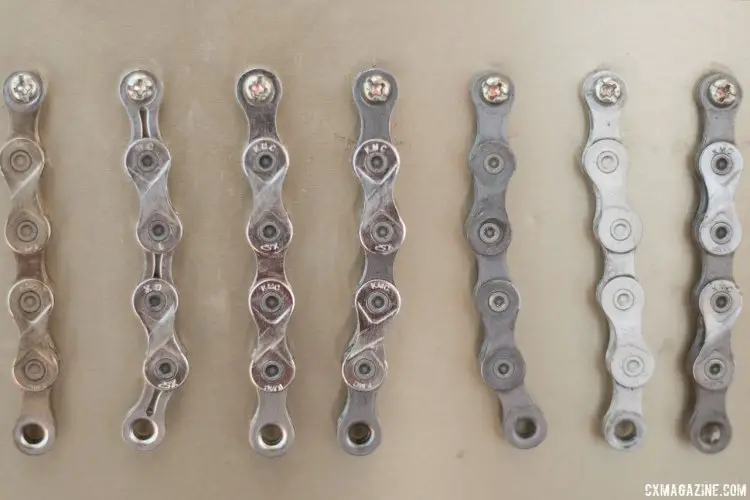
KMC Chain has a chain for everyone, including a rust-proof Eco Protect option (third from right) that retails for $60. Sea Otter Classic 2016. © Cyclocross Magazine
Keep reading on the next page for some simple changes that will you’ll really feel.



























